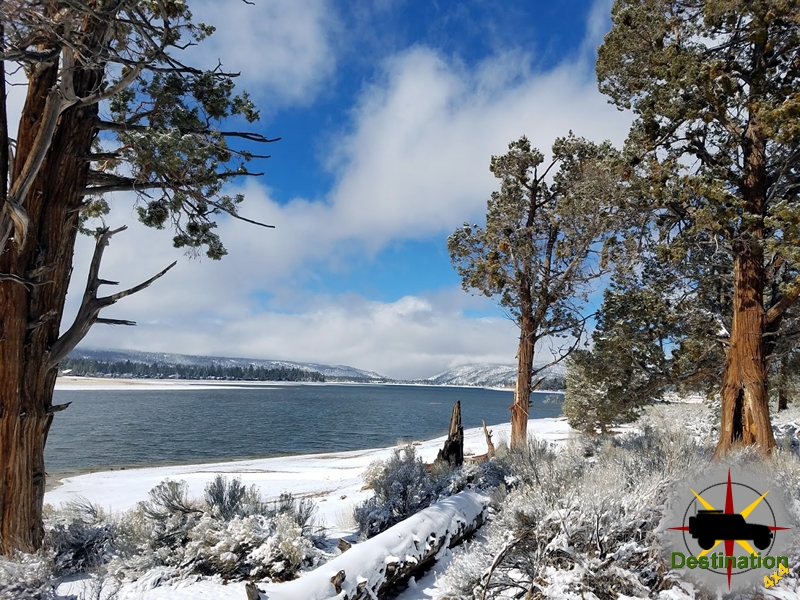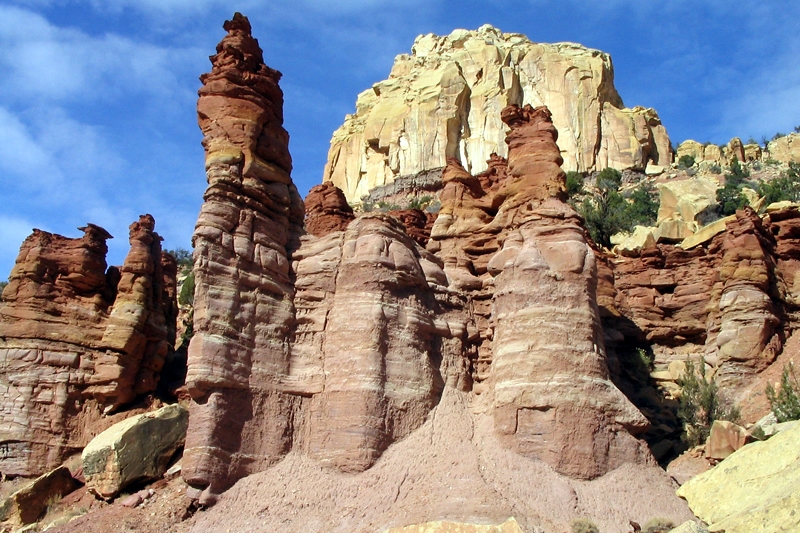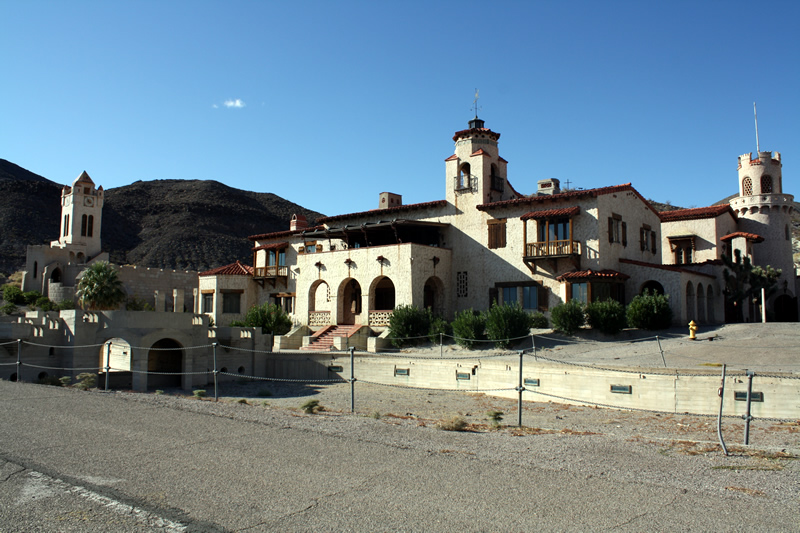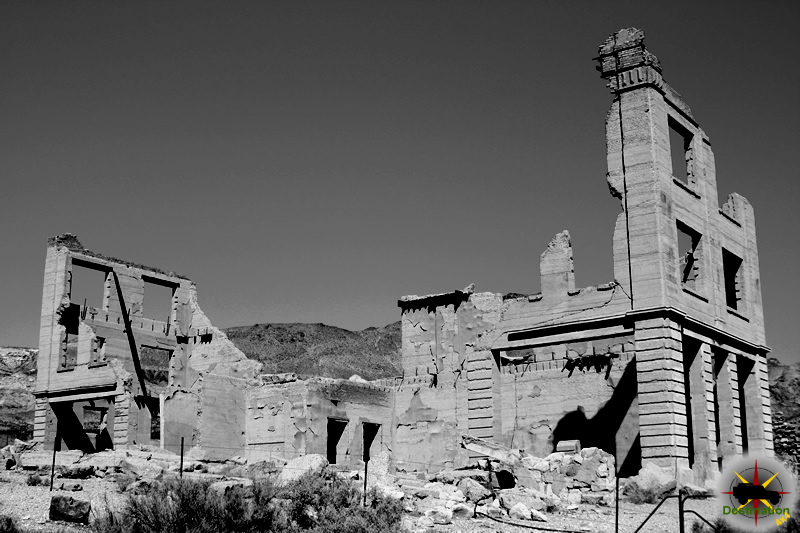
White-throated Swift (Aeronautes saxatalis)

The White-throated Swift is a medium-sized bird known for its swift and agile flight, sleek body, and distinctive white throat patch. Adults typically measure around 6.5 inches (16.5 cm) in length, with a wingspan of approximately 15 inches (38 cm). They have a dark, glossy plumage that aids in camouflage against the rocky cliffs where they often dwell. Their wings are long and slender, adapted for rapid and maneuverable flight, while their short bills are perfect for catching insects mid-air. Juveniles resemble adults but may have less contrast in their plumage.
Habitat and Distribution
White-throated Swifts are primarily found in the western regions of North America, ranging from the southwestern United States through parts of Mexico. They inhabit rugged, rocky terrain such as canyons, cliffs, and gorges, where they nest in crevices and on ledges. These birds are particularly well adapted to arid environments and are often seen in desert landscapes, although they may also occur in mountainous regions.
Behavior and Ecology
White-throated Swifts are highly adapted for aerial foraging, feeding primarily on flying insects such as flies, beetles, and mosquitoes. They are renowned for their impressive flight abilities, performing intricate maneuvers as they hunt on the wing. Their swift and agile movements enable them to navigate through narrow passages and steep cliffs with ease. Breeding pairs typically construct cup-shaped nests made of twigs, feathers, and saliva, which they attach to vertical rock faces. During the breeding season, males perform aerial courtship displays to attract females.
Conservation Status
The White-throated Swift is not currently considered globally threatened, although local populations may be impacted by habitat loss and disturbance. Conservation efforts are focused on protecting nesting sites, particularly in areas where cliffs are subject to human development or recreational activities. As an insectivorous species, White-throated Swifts may also be vulnerable to pesticide use, which can reduce their prey availability.
The White-throated Swift is a fascinating species well adapted to its rugged habitat and aerial lifestyle. Its graceful flight and striking appearance make it a favorite among birdwatchers and enthusiasts. By understanding the ecology and behavior of the White-throated Swift, we can better appreciate the importance of conserving its unique habitat and ensuring the long-term survival of this remarkable bird.
Field Guide Description
“Black above, black and white below, with long, forked tail. Distinguished from Violet-green swallow, (page 322) by longer narrower wings, bicolored underparts. In poor light, may be mistaken for Black Swift but smaller, with faster wingbeats. Common in mountains, canyons, cliffs. Nests in crevices.”
Field Guide to the Birds of North America, Third Edition, pg 262
Classification
| Kingdom | Animalia |
| Phylum | Chordata |
| Class | Aves |
| Order | Apodiformes |
| Family | Apodidae |
| Genus | Aeronautes |
| Species | saxatalis |
Resources
Northern Flicker (Colaptes auratus)
The Northern Flicker (Colaptes auratus) is a medium-sized woodpecker found across North America. It belongs to the family Picidae, which includes woodpeckers, sapsuckers, and flickers. This species is known for its distinctive sharp bill, behavior, and widespread distribution.

Description
The Northern Flicker exhibits sexual dimorphism, with males and females displaying different coloration. They have a length ranging from 28 to 36 centimeters (11 to 14 inches) and a wingspan of approximately 42 to 54 centimeters (16.5 to 21.3 inches).
- Plumage: The upperparts of the Northern Flicker are brown with black barring, while the underparts are beige or tan with black spots. They have a black bib on their chest and a prominent black crescent on the breast. The undersides of their wings and tails are a vibrant yellow or red, depending on the subspecies.
- Head: Their head is distinctive, with a gray face, a long, slightly curved bill, and a black malar stripe extending from the base of the bill to the neck.
- Behavior: Northern Flickers are primarily ground foragers, often seen hopping on lawns or probing the soil for insects with their long, barbed tongues. They also feed on ants, beetles, termites, and fruits.
Habitat
Northern Flickers inhabit a variety of habitats, including open woodlands, forest edges, parks, suburban areas, and occasionally urban environments. They prefer areas with scattered trees and ample open ground for foraging.
Breeding and Nesting
Breeding season for Northern Flickers typically begins in late April and extends into August. They are cavity nesters and will excavate their own nest holes in dead or decaying trees, fence posts, or even buildings.
- Eggs: Clutch sizes usually range from 3 to 8 eggs, which are white and elongated.
- Incubation: Both parents participate in incubating the eggs, which lasts for about 11 to 14 days.
- Fledging: The young birds fledge after approximately 25 to 28 days and remain dependent on their parents for several weeks after leaving the nest.
Migration

While some Northern Flicker populations are migratory, others are year-round residents. Migratory populations breed in northern regions and winter in southern areas, while non-migratory populations may remain in the same area throughout the year.
Conservation Status
The Northern Flicker is widespread and generally considered to be of least concern in terms of conservation status, according to the International Union for Conservation of Nature (IUCN). However, habitat loss and fragmentation, as well as competition for nest sites with invasive species such as European Starlings, pose localized threats.
The Northern Flicker is a fascinating species with its distinctive appearance, behavior, and adaptability to various habitats. Understanding its ecology and conservation needs is crucial for ensuring the continued well-being of this iconic woodpecker across its range. Further research into its nesting habits, population dynamics, and response to environmental changes can aid in effective conservation strategies.
Field Guide Description
“Two distinct groups occur: “Yellow-shafted Flicker” in the east and far north, and the “Red-shafted Flicker” in the west. These flickers have brown, barred back; spotted underparts, with black crescent bib. White rump is conspicuous in flight; no white wing patches. Intergrades are regularly seen in the Great Plains. “Yellow-shafted Flicker” has yellow wing lining and undertail color, gray crown, and tan face with a red crescent on nape. “Red-shafter Flicker” has brown crown and gray face, with no red crescent.”
Field Guide to the Birds of North America, Third Edition, pg 318
Classification
| Kingdom | Animalia |
| Phylum | Chordata |
| Class | Aves |
| Order | Piciformes |
| Family | Picidae |
| Genus | Colaptes |
| Species | cauratus |
References
Western Gray Squirrel (Sciurus griseus)
The Western Gray Squirrel (Sciurus griseus), also known as the western grey squirrel, is a large, arboreal rodent native to the western United States. Renowned for its bushy tail and agile tree-climbing abilities, this species plays a key role in forest ecosystems through seed dispersal. While primarily associated with forested regions, its range touches on areas bordering the desert southwest, such as western Nevada and southern California mountains, though it avoids open arid deserts in favor of wooded habitats. This description focuses on its biology, with notes on relevance to the desert southwest where applicable.

Classification
The Western Gray Squirrel belongs to the kingdom Animalia, phylum Chordata, class Mammalia, order Rodentia, family Sciuridae, genus Sciurus, and species griseus. It is divided into three subspecies: S. g. griseus (from central Washington to the western Sierra Nevada in central California), S. g. nigripes (from south of San Francisco Bay to San Luis Obispo County, California), and S. g. anthonyi (from San Luis Obispo County to northern Baja California, Mexico). This species is part of the tree squirrel group, distinguished by its arboreal adaptations. It is native to the Nearctic biogeographic region and is sometimes referred to as the silver-gray squirrel, California gray squirrel, or Oregon gray squirrel. Note that it should not be confused with the closely related Arizona Gray Squirrel (Sciurus arizonensis), which inhabits more southern southwestern regions like Arizona and New Mexico.
Physical Description
Western Gray Squirrels are the largest native tree squirrels in their range, with a total length of 43–61 cm (17–24 in), including a long, bushy tail that accounts for about half their body length. They weigh 0.35–1 kg (0.77–2.2 lb). Their fur exhibits countershading: dorsal surfaces are silver-gunmetal gray with possible black flecks, while the underside is pure white. The tail is often curved in an “S” shape and may have a white fringe. Ears are large and tuftless, turning reddish-brown on the back in winter. They have plantigrade, pentadactyl feet with sharp claws for climbing, and a dental formula of I 1/1, C 0/0, P 2/1, M 3/3 = 22. Juveniles have furled tails that fully bush out in adulthood. Molting occurs twice yearly: a complete molt in spring and a partial one in fall. Sexual dimorphism is minimal, though males tend to be slightly larger.
Behavior
Western Gray Squirrels are strictly diurnal and primarily arboreal, preferring to travel via interconnected tree canopies but foraging on the ground. They are scatter-hoarders, burying food caches for later retrieval using scent, which aids in seed dispersion as unrecovered items germinate. Home ranges span 0.5–7 hectares, larger for males, and are non-territorial except during female estrus. They do not hibernate but reduce activity in winter, relying on caches. Alarm behaviors include spreading the tail like an umbrella for camouflage, barking calls, tail flicking, and foot stamping. They are shy around humans, often fleeing up trees with hoarse chirps. Grooming occupies 3–15 minutes daily, focused on the head. In hot weather, they sprawl on branches to cool.
Food Sources
As omnivores, Western Gray Squirrels have a diet varying by habitat. In coniferous forests, they primarily consume pine seeds and cones; in oak woodlands, acorns and nuts dominate. They also eat berries, fruits, fungi (including hypogeous types like truffles), bark, sap, tender shoots, leaves, forbs, insects, bird eggs, and small vertebrates. High-oil foods like pine nuts and acorns help build fat reserves for winter. They forage in trees and on the ground, using incisors to crack hard shells, typically in morning and late afternoon.
Breeding
Western Gray Squirrels reach sexual maturity at 10–11 months and breed starting around one year old. Mating season extends from December to June, with peaks in late winter to early spring. Gestation lasts about 43–44 days, resulting in litters of 1–5 young (average 3–5, smaller for young females). Kits are born blind, hairless, and helpless between March and mid-August, developing slowly and remaining in the nest for up to six months. Weaning occurs at 10–12 weeks. Females are territorial during breeding, chasing rivals and engaging in aggressive encounters; mating can be violent. They are gonochoristic, with separate sexes. Typically one litter per year.
Range

Western Gray Squirrels inhabit woodlands, mixed coniferous forests, oak-dominated areas, and riparian zones with sufficient tree cover for arboreal movement. They occur at elevations from sea level to 2,500 m (8,200 ft), preferring transitional zones with hardwoods like oaks for mast production. Nests (dreys) are built high in trees from sticks, leaves, moss, and bark, with winter nests being larger and covered. Their geographic range spans the western United States, primarily along the Pacific coast from central Washington through Oregon and California to northern Baja California, Mexico, with a small extension into western Nevada. In the desert southwest, populations are limited to forested mountain and foothill areas bordering arid regions, such as the Sierra Nevada in eastern California and the Carson Range in western Nevada; they do not inhabit open deserts like the Mojave or Great Basin but may be found in adjacent wooded transitions. The species is absent from core desert southwest states like Arizona, Utah, and New Mexico, where the similar Arizona Gray Squirrel resides instead.
Classification
| Kingdom | Animalia |
| Phylum | Chordata |
| Class | Chordata |
| Order | Mammalia |
| Family | Rodentia |
| Genus | Sciurus |
| Species | griseus |
References
The Saturday Review, November 17, 1894

J.C. Bicknell’s newspaper articles on the Lost Dutchman Mine, published in the late 19th and early 20th centuries, played a significant role in popularizing the legend of the elusive gold mine hidden in the Superstition Mountains of Arizona. Bicknell, an editor and writer with a flair for storytelling, often blended facts with folklore in his accounts, creating a captivating narrative that drew readers into the mystery of the mine.
His articles typically described the treacherous terrain of the Superstition Mountains, the dangers faced by treasure hunters, and the various claims made by those who sought the mine. Bicknell’s writing often emphasized the drama and intrigue surrounding the mine’s supposed discovery by Jacob Waltz, the “Dutchman” for whom the mine is named, and the subsequent disappearances and deaths of those who tried to locate it after his death.
Bicknell’s stories were filled with colorful characters, dramatic encounters, and mysterious clues, contributing to the enduring allure of the Lost Dutchman Mine legend. His work not only kept the legend alive but also inspired countless adventurers and treasure hunters to search for the fabled gold, ensuring that the tale of the Lost Dutchman Mine would become a permanent fixture in American folklore.
The following article by P. C Bicknell is posted the The Saturday Review, November 17, 1894.
Mythical Mine
Story of a Lost Claim in the Superstition Mountains
‘DUTCH JACOB’S” SECRET
Phoenix People Now Hunting for the Treasure With Prospects of Success.
Saturday Reviews.
Fifty-six miles a little south of east of Phoenix, or 6ome eighteen miles from Goldfield, in the Superstition mountains, is a mythical mine that may some day prove a reality. More than thirty years ago, or in the early sixties, so the story goes, two German prospectors came to Arizona, and in the secluded spot a above mentioned they found six Mexican working a rich gold mine They were mining by the crude Spanish method, but the ore was to rich and the gold so plentiful that the Dutch prospectoss were determined to get possession of the claim. They did so by the speediest method, by killing the Mexican, dead men tell no tales,
As civilization drifted into this valley Dutch Jacob and his partner, both with plenty of gold, became familiar to the people. Later the partner disappeared, and it is generally supposed he left by the same route as did the half dozen Mexicans a few years before.
Finally the now aged Ditch Jacob moved to the vicinity of Phoenix, but he made frequent trips the Superstition mountains, going alone, and each time he brought back bountiful riches. Finally old Jacob, along in the seventies lived the life of a recluse, and was seen in Phoenix but once in a year or two. Ha a ways turned up at election time and his only mission on earth seemed to be to vote the Republican ticker; during the remainder of the time few knew he was on earth. He made his last trip to the mine in ’84. This time he brought $500 of gold in two small sacks.
He was now approaching the age of four score, and he became quite feeble. During his declining years a sympathetic Ruth ministered to the tottering Jacob, and in 90 he quit this earth. To this woman, who is now a well known married woman of Phoenix, he left his little property here. He also divulged the secret of the mine, which she tells as follows:
In a gulch in the Superstition Mountains, the location of which is described by certain landmarks, there is a two room house in the mouth of a cave, on the wide of the slope near the gulch. Just across the gulch, about 20o yards, opposite this house in the cave, is a tunnel, well covered up and concealed n the bushes. Here is the mine, the richest in the world, according to Dutch Jacob. Some distance above the tunnel on the a shaft of incline that is not so steep but one can climb down. This too, Is covered carefully, The shaft goes right down in the midst of the rich gold ledge, where it can be picked off in big flakes of almost pure gold.
After Dutch Jacob had been buried the woman took a miner with her and spent an entire summer hunting for the mine, but she was unable to find even the ruins of the house. She tried again next year, but failed, owning perhaps to changes wrought by the heavy rains that annually fall in that section.
Many had hunted for the mine even twenty years ago, and since the death of Dutch Jacob, J. E. Bark, P. C. Bicknell the journalistic prospector, and many others have made frequent trips in that locality.
A few weeks ago Mr. Bicknell accidentally stumbled onto the stone house with two rooms in the mouth of a cave. He felt as though he now had the secret but the grubstake was about played out and he returned to Phoenix. As an evidence he brought a hand-made shovel pounded out of an iron rod. This crude implement looked as though it had been used in the work of reducing ore, as it is yet covered with slag and some signs of silver. An old drill rag was also picked up in the cabin.
Bicknell has again gone, and the last week Frank Luke and Frank Kirkland armed with the full story of the mythical mine started for the Superstitions. They reached Goldfield, which is some eighteen miles from the spot, but the rough country makes the distance twenty-six miles. Here they chartered a horse and a mule and started out in search of the bidden fortune. The day was hot and the in mule lazy, so that after going thirteen miles, or half way, Kirkland weakened. His legs grew tired kicking the mule, and they feared as he grew slower they would not be able to return. Frank would not chance walking, so a council was held and they returned to Goldfield, and next day returned to Phoenix, having gone to within thirteen miles of the place and been absent four days.
The secret of the mice is still unsolved and it may remain so for years, or even forever, but one thing is certain, of all the bidden mines of Arizona there is a present the best evidence that the one operated by Dutch Jacob did exist and that it is an unusually rich claim. The old man in his dying hour made the location so plain to the woman that she never doubted him. If Bicknell does not now solve the problem the precaution taken by Dutch Jacob will ba the only reason.
References
Field Guide to the Birds of North America

The “Field Guide to the Birds of North America” was first introduced to me by my brother, who is a Field Biologist for San Bernardino County. At the time, the two of us were camping along the 395 Highway on the Eastern Sierra, He brought his copy in the hopes of seeing some new bird species. After a few days of camping, we stopped at the visitors center at Mono Lake where I purchased by copy. Since then, this book is taken on every trip I take out of the city.
My copy of the third edition features over 800 species of birds all organized by family. The description for each bird contains an illustration by sex, descriptions and distribution map along with many variations and subspecies.
The 7th edition currently contains a total of 1,023 species, which is roughly 20% more than my much older copy. The latest version contains revisions in taxonomy revised to reflect the radical new American Ornithological Society taxonomy established in 2016. The update of taxonomy is the reason for the additions, so at some point I will break down to purchase the new version.
Whenever I go on a trip, I pull out the maps that I will need to explore the area. I also look for a bird watching checklist which typically contain a list of bird known to be in the area. These lists will make it dramatically easier narrow down birds you are looking for, and help in your identification.
Bird Watching
People engage in birdwatching for a multitude of reasons, each deeply personal and rewarding I personally enjoy listening to the birds while camping:
- Appreciation of Nature: Birdwatching allows people to connect with the natural world, fostering a deeper appreciation for the beauty and diversity of birds and their habitats.
- Relaxation and Stress Relief: Spending time in nature has been shown to reduce stress and promote relaxation. Birdwatching provides an opportunity to escape the hustle and bustle of daily life and immerse oneself in the peacefulness of natural surroundings.
- Physical Activity: Birdwatching often involves walking or hiking, providing a gentle form of exercise that can improve cardiovascular health and overall well-being.
- Mental Stimulation: Identifying birds and learning about their behaviors, habitats, and calls can be mentally stimulating and intellectually rewarding.
- Community and Social Connection: Birdwatching can be a social activity, providing opportunities to connect with like-minded individuals who share a passion for birds and the environment.
- Conservation Awareness: Birdwatching can foster a sense of environmental stewardship by raising awareness about the importance of preserving habitats and protecting bird species and their ecosystems.
- Adventure and Exploration: Birdwatching often takes enthusiasts to new and exciting locations, encouraging exploration and a sense of adventure.
- Photography and Artistic Expression: Many birdwatchers enjoy capturing images of birds through photography or expressing their observations through various forms of artistic expression, such as drawing or painting.
Overall, birdwatching offers a myriad of benefits that cater to both physical and mental well-being while fostering a deeper connection to the natural world.
Book Summary
| Name | Field Guide to the Birds of North America |
| Author | Jonathon Alderfer |
| Publisher | National Geographic |
| Edition | 7th Edition |
| Pages | 592 Pages |




